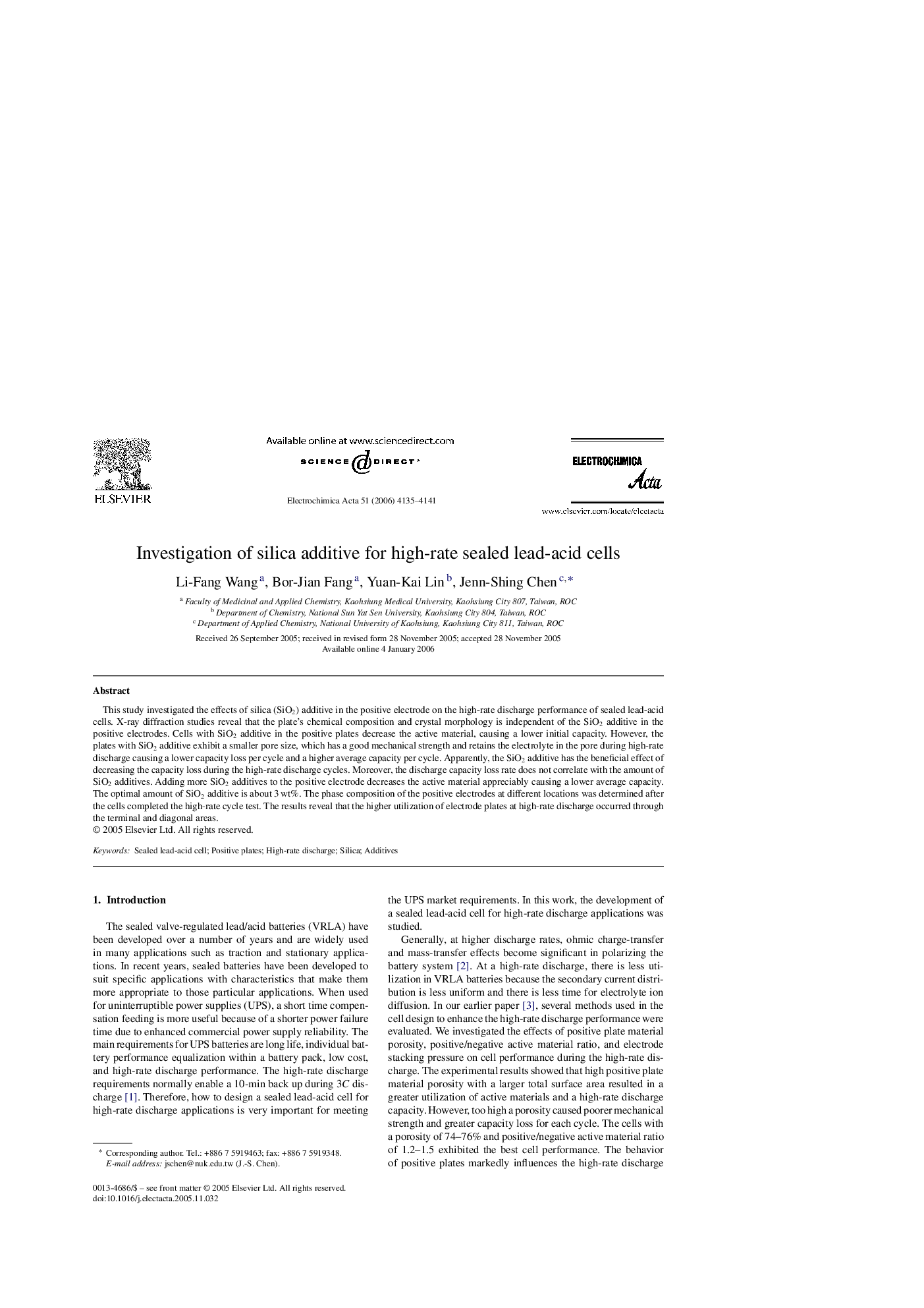| Article ID | Journal | Published Year | Pages | File Type |
|---|---|---|---|---|
| 196293 | Electrochimica Acta | 2006 | 7 Pages |
This study investigated the effects of silica (SiO2) additive in the positive electrode on the high-rate discharge performance of sealed lead-acid cells. X-ray diffraction studies reveal that the plate's chemical composition and crystal morphology is independent of the SiO2 additive in the positive electrodes. Cells with SiO2 additive in the positive plates decrease the active material, causing a lower initial capacity. However, the plates with SiO2 additive exhibit a smaller pore size, which has a good mechanical strength and retains the electrolyte in the pore during high-rate discharge causing a lower capacity loss per cycle and a higher average capacity per cycle. Apparently, the SiO2 additive has the beneficial effect of decreasing the capacity loss during the high-rate discharge cycles. Moreover, the discharge capacity loss rate does not correlate with the amount of SiO2 additives. Adding more SiO2 additives to the positive electrode decreases the active material appreciably causing a lower average capacity. The optimal amount of SiO2 additive is about 3 wt%. The phase composition of the positive electrodes at different locations was determined after the cells completed the high-rate cycle test. The results reveal that the higher utilization of electrode plates at high-rate discharge occurred through the terminal and diagonal areas.
